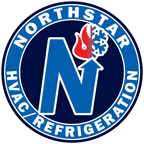Management of Change (MOC) for Ammonia Refrigeration Systems: Ensuring Safety and Compliance
Written by Ed Rice
When managing ammonia refrigeration systems, safety is of paramount importance. Changes to these systems—whether in equipment, procedures, or personnel—can introduce new hazards if not managed properly. To mitigate these risks, regulatory agencies such as OSHA and the EPA require a Management of Change (MOC) process for ammonia refrigeration systems as part of their Process Safety Management (PSM) and Risk Management Plan (RMP) programs. This process ensures that any modifications do not introduce new hazards and that the system continues to operate safely.
What is Management of Change (MOC)?
MOC is a systematic approach to managing safety, operational, and environmental risks associated with changes to processes, equipment, and systems. For ammonia refrigeration systems, the MOC process is designed to review and assess any proposed changes that could impact the system’s safety or functionality. It involves a structured assessment to ensure that the system remains within safe operational limits and complies with regulatory requirements.
Regulatory Requirements for MOC
The MOC element is a requirement under:
OSHA’s Process Safety Management (PSM) Program: Mandated by OSHA 1910.119, PSM regulates hazardous chemical processes, including those involving ammonia. MOC is one of the 14 essential elements of PSM.
EPA’s Risk Management Plan (RMP): Under the Clean Air Act, the EPA requires facilities handling large quantities of hazardous chemicals, including ammonia, to submit an RMP. MOC is part of the hazard prevention elements to ensure that changes do not compromise safety.
Key MOC requirements include:
Documentation of the Change: Any modifications to the ammonia refrigeration system must be thoroughly documented, including the technical basis for the change.
Risk Assessment: The MOC process requires a thorough risk assessment to ensure that the proposed changes do not introduce new hazards. This includes identifying potential risks and taking steps to mitigate them.
Review and Approval: Changes must be reviewed and approved by authorized personnel before implementation. This often involves a multi-disciplinary team to ensure all aspects of the change are considered.
Employee Training: Personnel must be trained on any changes to the system to ensure they understand the modifications and the new procedures or risks involved.
Updating Process Safety Information (PSI): The MOC process must ensure that the system’s process safety information (PSI) is updated to reflect any changes.
Why MOC is Critical to Ammonia Refrigeration Systems
Changes to ammonia refrigeration systems, such as new equipment, procedural adjustments, or control system upgrades, can have significant safety and operational implications. The MOC process is crucial for several reasons:
Prevention of New Hazards: Without a structured MOC process, even small changes can introduce risks, such as increased pressure, inadequate ventilation, or unexpected chemical reactions. MOC ensures that these risks are identified and addressed.
Compliance with Regulations: OSHA’s PSM and EPA’s RMP both require MOC as a critical safety element. Failure to comply with these regulations can result in fines, legal liabilities, and increased risk of accidents.
Continued Safe Operation: The MOC process helps ensure that the system continues to operate within its designed safety parameters, reducing the likelihood of malfunctions or accidents during operation and maintenance.
Protection of Personnel and the Public: Ammonia leaks or system failures can have serious consequences, including health risks to workers and the public. MOC helps prevent these incidents by ensuring that all changes are carefully analyzed and managed.
How MOC Relates to Other PSM Elements
MOC is closely related to other elements of OSHA’s PSM and EPA’s RMP programs, including:
Process Hazard Analysis (PHA): MOC ensures that changes are reviewed for potential hazards, complementing the ongoing hazard analysis required by PHA.
Mechanical Integrity: Ensuring that equipment changes do not compromise the system's integrity is key to maintaining mechanical reliability and preventing equipment failure.
Training and Procedures: MOC requires that personnel be trained on new procedures and equipment, ensuring they are fully aware of the implications of the change.
Incident Investigation: If an incident occurs following a change, the MOC process can be reviewed to ensure that all potential risks were addressed and that no steps were overlooked.
Steps to Effectively Manage Change
To properly manage change in ammonia refrigeration systems, the following steps should be taken:
Initiate the MOC Process: When a change is proposed, initiate the MOC process by documenting the scope of the change, the technical basis, and any potential safety impacts.
Risk Assessment: Conduct a risk assessment to evaluate how the change may affect system safety and performance. Consider any new hazards that may arise from the change.
Review and Approval: Ensure the change is reviewed and approved by a qualified team, including engineers, safety personnel, and operations staff. This collaborative approach ensures all safety aspects are considered.
Update Documentation: Update process safety information, procedures, and operating manuals to reflect the change. This ensures that all relevant information is current and accurate.
Train Personnel: Provide training to all employees involved in the operation and maintenance of the system, ensuring they understand the change and any new risks or procedures.
Implementation and Monitoring: Implement the change according to the approved plan and continuously monitor the system to ensure that the change does not introduce unforeseen issues.
How Northstar Refrigeration Can Help
At Northstar Refrigeration, we understand the complexities of managing change in ammonia refrigeration systems. Our team of experts can guide you through the MOC process to ensure compliance with OSHA’s PSM program and the EPA’s RMP requirements. We provide comprehensive support, including risk assessments, documentation updates, and employee training, to help you maintain a safe and efficient refrigeration system.
For more information or to discuss how we can assist you with your MOC needs, contact Northstar Refrigeration at (508) 888-3692. Let’s work together to ensure your ammonia refrigeration systems remain safe, efficient, and compliant.
Edward Rice
Director of Marketing,
Northstar Refrigeration, Inc.
95 Camelot Drive, Unit 1,
Plymouth, MA 02360
erice@northstarhvacr.com www.northstarhvacr.com
p: (508) 888-3692 x115
m: (508) 561-8638



